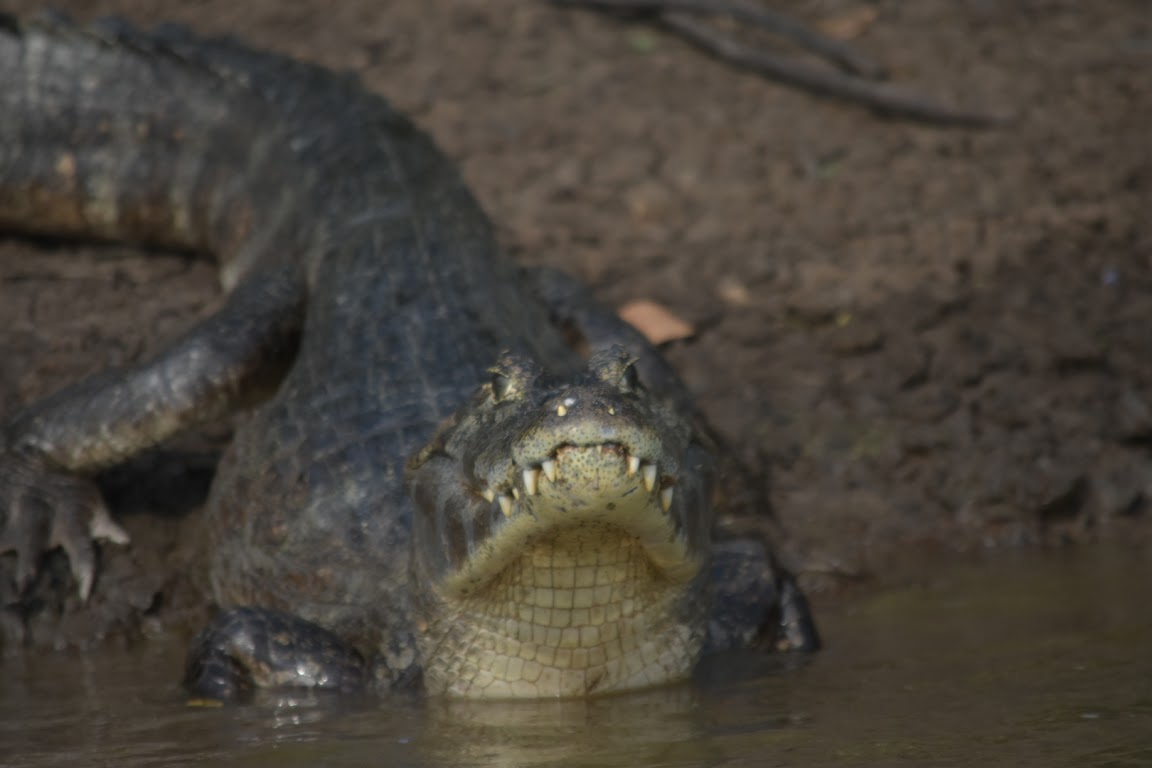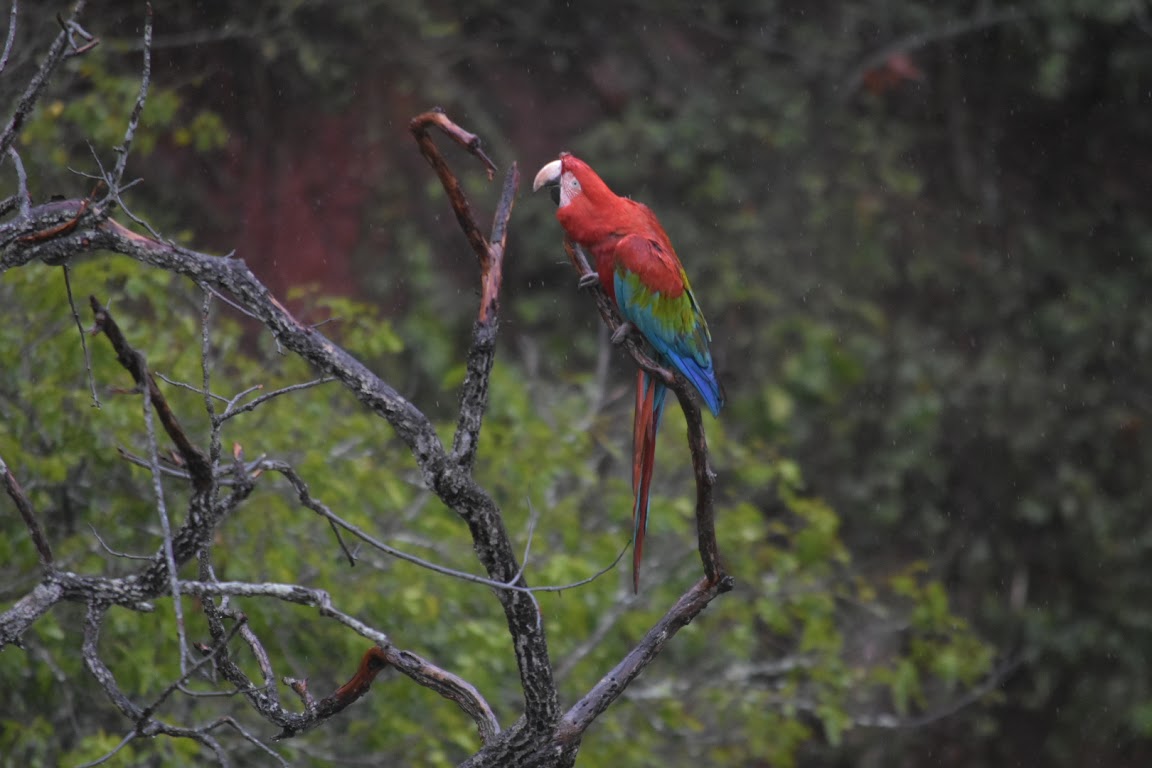Bonito, Brazil – What to do and everything you need to know
Bonito has a lot going for it: a collection of outdoor activities set amidst ethereal natural beauty, a convenient location midway between the Pantanal and Iguazu Falls, and a name that means “pretty” in Portuguese. This small town and its surrounding lakes, streams, caves and mountains are a quasi-microcosm of Brazil: beautiful, but also confusing for first-timers. Because of how many attractions there are and how the system for visiting them works, planning a trip here can be a bit overwhelming. Having been there, done that, together with having done a bunch of research, I wrote this guide to tell you all about what Bonito’s highlights are and how to visit them (because believe me, the process for buying tickets is very counter-intuitive).
Contents
What to do in Bonito (and where)
Bonito’s main claim to fame, without a shadow of a doubt, is its snorkelling. Images of visitors in wetsuits bobbing down turquoise streams, clear like a swimming pool and teeming with fish, adorn every Bonito brochure and the pages of every Instagrammer who visits. There are a number of sites where one will be treated to this scene: the aptly-named Aquario Natural, Rio Sucuri and Rio da Prata.
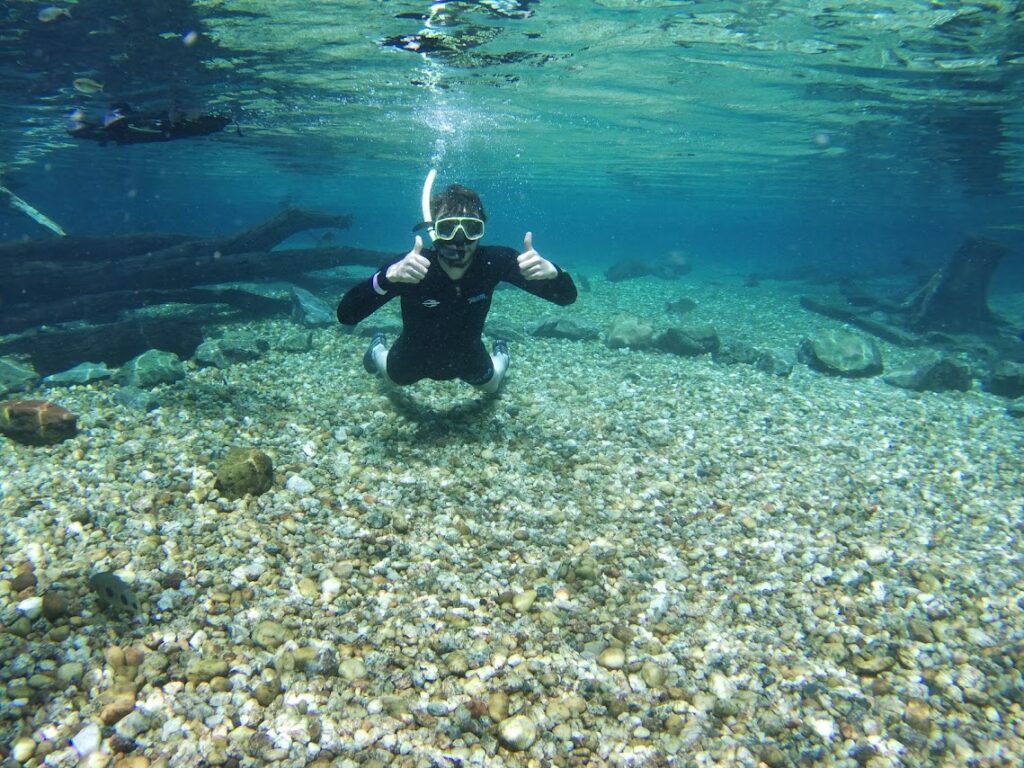
Despite the snorkelling’s dominance in Bonito’s marketing, the town is far from being a one-trick pony. There are many caves to explore in the hills – some are easily accessible such as Gruta da Lago Azul, with its stairs leading down to a blue-green lagoon. Others require a bit of spelunking to be explored, and the most famous – Abismo Anhumas – will involve a 72-metre abseil and some diving afterwards to be awed by the 20-metre underwater stalagmites.
Waterfalls are everywhere, as one would expect from a land of streams, and many were made to be swam in thanks to deep plunge pools and wooden platforms with steps being constructed. Boca da Onca is a particularly beautiful one, with water cascading over a series of ledges. Estancia Mimosa is another noteworthy site given that a visit here will feature not one, not two, but eight waterfalls, one of which comes with a 6-metre-high diving board.
Other opportunities to get wet around Bonito include river tubing in Parque Ecologico Rio Formoso and taking a dip in one of the many balnearios, natural swimming pools.
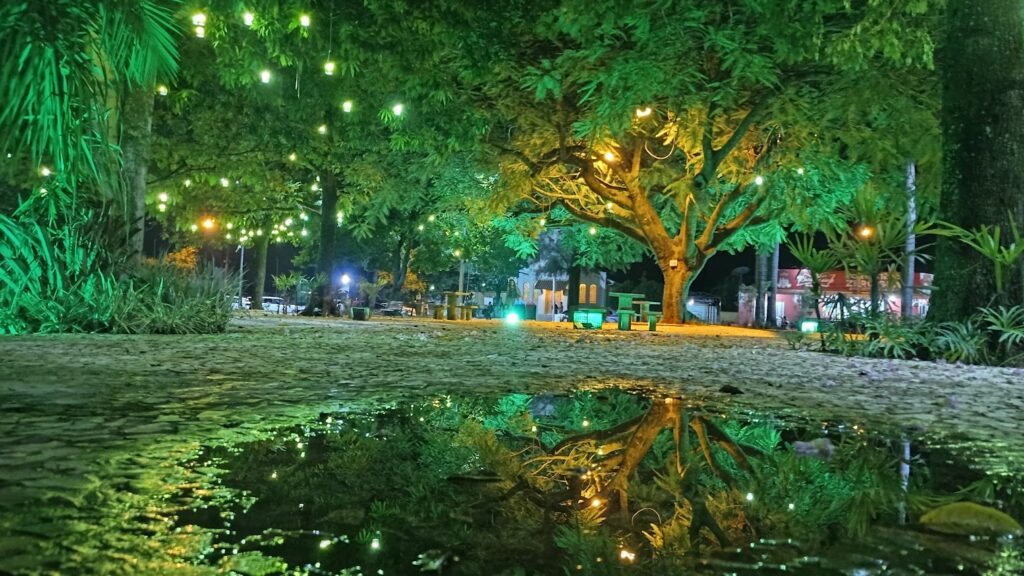
The town itself isn’t likely to be the high point of any visit, but it’s quite pleasant nonetheless. Praca da Liberdade, the main square, is made up of a fountain with giant fish statues surrounded by trees, where lightbulbs placed inside beer bottles hang. In town is also what is, in my opinion, the most underrated of Bonito’s attractions: the Bonito Aquarium. Nestled inconspicuously among a residential block, it’s open until 9PM and a visit there involves being shown around by an English speaking guide. As well as a bunch of fun facts about the fish that live in Bonito’s rivers, I got to feed some fish by holding food on a stick above the water and waiting for them to leap out, and I got to stroke a freshwater stingray.
How to book tours in Bonito (AKA how to visit these sites)
This is where things get interesting.
With the exception of Balneario Municipal, all visits to Bonito’s attractions have to be pre-booked through an agency in the town itself. As they are all connected to a central system, there is a daily cap on the number of available tickets, which keeps footfall at a sustainable level. It doesn’t really matter which agency you book with in terms of price since prices are set by the attractions’ owners.
Also, the fact that agencies call these “tours” (or “passeios”, if they don’t speak English) can be a bit misleading: these are literally just entrance tickets since transport is generally an added extra. If you ask for shared transport it will generally leave Bonito at 7 AM, while if you choose to drive there yourself, you’ll be assigned a time slot by the agent.
Should I book ahead?
You certainly should if you visit in the high season (during Brazilian school holidays): because Bonito is incredibly popular with domestic as well as foreign visitors, attractions during these periods can be sold out weeks or even months in advance. If you are visiting during this period or would simply like some peace of mind, try using Google Maps to find an agency and look at their reviews. They should have their website attached and, like everyone in Brazil, a Whatsapp number for you to contact. Exchange some messages about where you’d like to visit, and they’ll let you know if they have availability plus how much it will cost.
Visit outside this period, though, and you should have no problem rocking up to an agency or your hostel’s front desk and asking what they’ve got available. Alternatively, if you’ve collected some phone numbers you can start firing off messages and see who responds. Some stay open until late at night, which is particularly handy if you’ve just jumped off a transfer from the Pantanal (these tend to arrive at 5 PM).
I personally used Acqua Studio de Viagens to book my tours. Their speedy responses to my Whatsapp messages and good command of English had the process go so smoothly that I wondered if I was still in Brazil.
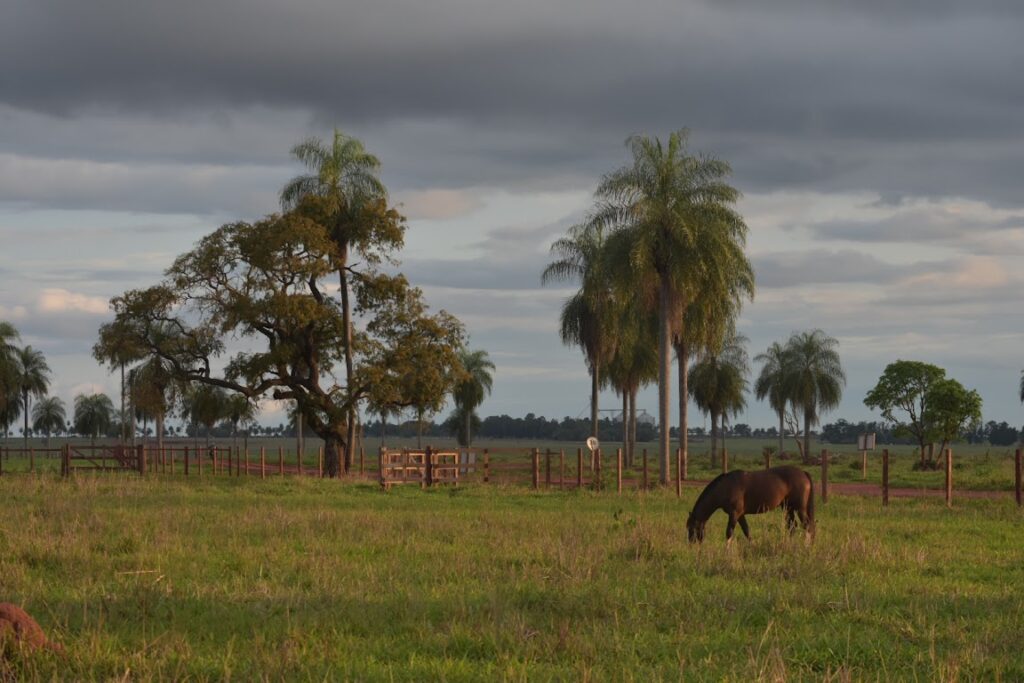
How much do tours around Bonito cost?
Let’s not prevaricate around the bush: tours around Bonito are expensive, and if you visit multiple sites it can quickly add up to a lot. Since prices are set by their owners, there’s unfortunately no way around them if you want to visit a particular site. Transport costs vary between R$50 and 150, depending on whether you go for shared or private transport and how far out the site is. You can also rent a bicycle for R$45 per day, and use a combination of a cycle path (separate from the main road) and side roads to get to Balneario Municipal and Aquario Natural. Cycling out to other sites is also possible, though bear in mind that this will take you onto the main road. Proceed with caution – some motorists can be pretty crazy.
All prices stated below are for the low season – bank on them being 30% more in the high season.
Snorkelling
Rio da Prata – R$300
Aquario Natural – R$230
Rio Sucuri – R$231
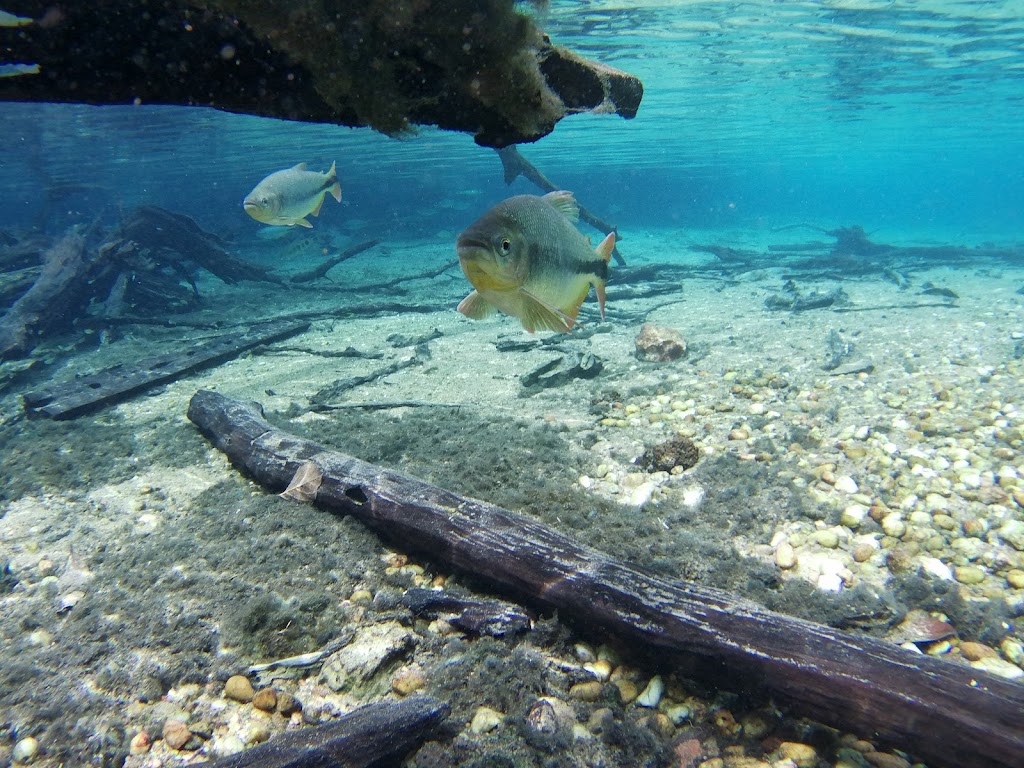
Caves
Gruta do Mimoso – R$109
Abismo Anhumas – R$1270
Waterfalls
Estancia Mimosa – R$205
Boca da Onca – R$350
Wildlife around Bonito
Of course, this being Shoestring Safari, it would be remiss of me to not mention some of the wildlife spotting opportunities that exist here. While snorkelling, you’re bound to see shoals of dourados and piraputanga below the surface – they are, after all, what placed the town on the map. Lift your head out of the water every now and then, though, and you may see monkeys or toucans staring back. While you’ll have probably already seen these in the Pantanal, there’s something about being in the water while spotting them that hits different.

Buraco das Araras is another well-known wildlife location thanks to its colony of red and green macaws that often put on a show, swooping around the sinkhole in which they nest – since visits to there are often paired with Rio da Prata, I’ve written more about it in this post. At Rio da Prata, macaws often visit the lunch area to try to steal people’s food and prehistoric-looking birds called seriemas often stroll through the camp. I also got incredibly lucky and saw a tamandua on my way to the snorkelling site – what was less lucky was that I didn’t have my DSLR camera with me, and it was too far away to be properly captured on my Akaso!
Finally, if you’re cycling to any of the sites, be sure to keep your eyes on the fields since giant anteaters are frequently seen around here. I managed to find one ambling about a field and, in time, it crossed the cycle path in front of me with a baby on its back.
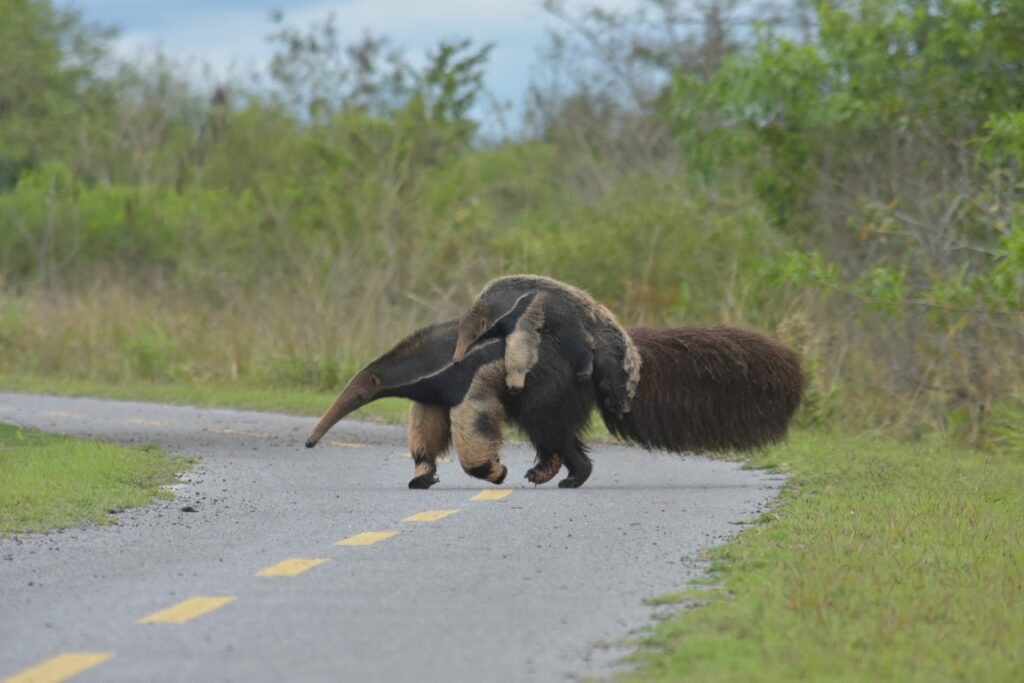
Where to eat
The high street and surrounding blocks are packed with restaurants of every sort: burger bars, Italian restaurants, steakhouses and botecos serving up the ubiquitous plates of meat, beans and rice. One dish that’s popular with visitors is caiman meat – in this part of Brazil, they are farmed like cattle.
Bonito also has a small selection of bars that beer lovers will enjoy. Two of note are Pub Paulistano, for its local flair and ale that comes in what looks like shampoo bottles (don’t worry, it still tastes amazing) and Bonito Beer – the name’s the only unimaginative thing about this place, where one buys a token at the counter and pours out their own glasses. Different beers have different prices per millilitre, but you can have as much or as little of each as your credit will allow. R$30 gets you a little under a litre for most.
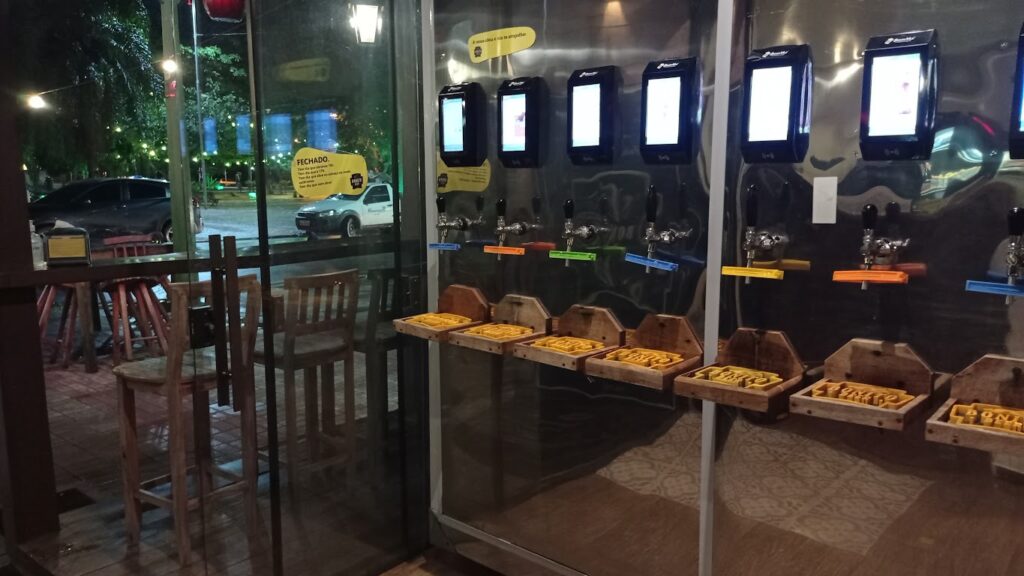
Where to stay in Bonito on a budget
As with most towns in Brazil, the best way to find cheap accommodation is to look on Booking.com if you’d like a dorm or Airbnb if you’d like a private room. Two of the most popular hostels in Bonito are HI Hostel, which has a tour desk and years of experience in welcoming travellers, and Selina Hostel, a coworking space with a huge, swanky, pool and bar area. I personally stayed in Hostel Alabama, where a bubbly owner and its small size made for a cheery social scene, one that not even the language barrier could hinder.
Is Bonito safe?
Very. The worst crime that happens around here is shoplifting, and wandering around at night is as safe as any town in Europe.



